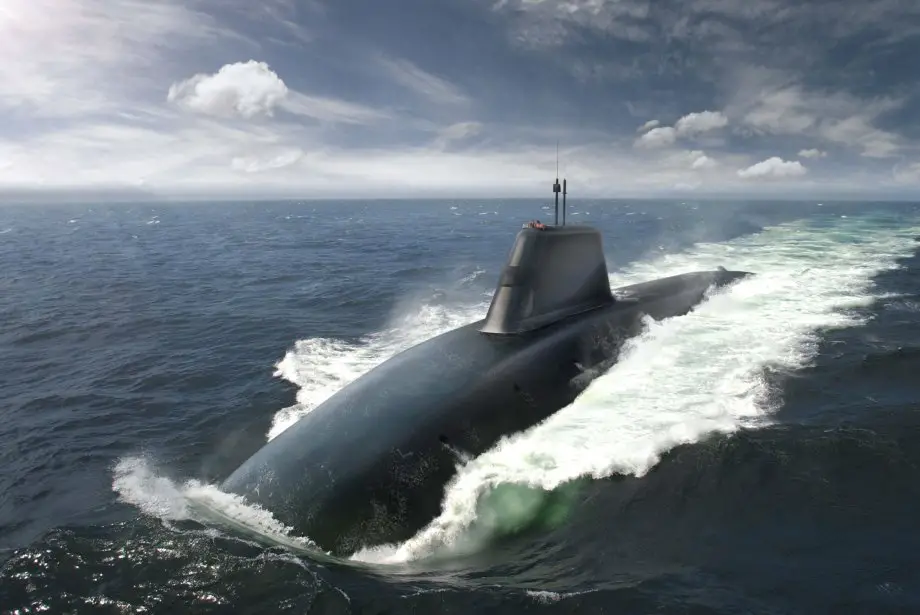Breaking news
UK: Overview of Royal Navy's future Dreadnought class submarines.
The Royal Navy is preparing for the introduction of the Dreadnought-class submarines, which are set to replace the Vanguard-class. This next-generation fleet is expected to play a key role in the United Kingdom's maritime nuclear strategy from the 2030s onwards. This overview provides an insight into the specifications, capabilities, and anticipated role of these submarines within the Royal Navy's operations.
Follow Navy Recognition on Google News at this link
 Artist rendering of future Dreadnought class submarine. (Picture source: UK MoD)
Artist rendering of future Dreadnought class submarine. (Picture source: UK MoD)
The Dreadnought-class submarines represent the next generation of nuclear-powered ballistic missile submarines for the United Kingdom, set to replace the aging Vanguard-class that has been in service since the 1990s.
These submarines are part of the UK's strategic nuclear deterrent force, designed to maintain a continuous at-sea deterrence (CASD) capability. The principle behind CASD is to ensure that at least one submarine is always at sea, capable of launching a nuclear counterstrike, thus deterring potential adversaries from launching a first strike.
The Vanguard-class submarines, the predecessors to the Dreadnought class, were initially designed for a service life of 25 years, carrying Trident II D-5 ballistic missiles. The need for replacement stems from both the aging of the Vanguard class and the evolving requirements of national defense. The decision to proceed with the Dreadnought class, initially referred to as the "Successor" program, was formally announced in 2016.
The Dreadnought class includes four submarines, with the lead submarine named Dreadnought and the subsequent ones named Valiant, Warspite, and King George VI. This class of submarines is expected to carry Trident II D-5 missiles, a continuation of the armament carried by the Vanguard class. The transition to the Dreadnought class is a reflection of the UK's commitment to maintaining its nuclear deterrent solely through a submarine-based platform, especially after the retirement of the last Royal Air Force WE.177 nuclear bomb in 1998.
The UK's strategic defense posture, as outlined in various Strategic Defence Reviews (SDR), includes maintaining a stockpile of around 215 warheads, with approximately 120 active and deployable at any given time. Under CASD, at least one Vanguard-class submarine is continuously at sea, equipped with up to 16 Trident missiles that can carry multiple warheads. The base for these operations is HMNB Clyde in Scotland, highlighting the strategic importance of this location.
The development and procurement of the Dreadnought class have been subjects of considerable financial scrutiny and political debate. The program's costs have been significant, with initial estimates in 2011 projecting around £25 billion, which had risen to £31 billion by 2015, factoring in defense inflation and the costs related to design, testing, and construction.
Additionally, a contingency fund of £10 billion was set aside to address unforeseen expenses. By 2023, part of this contingency fund had been accessed to accelerate construction efforts. Critics of the program have raised concerns over the cost, ethical implications, and strategic necessity of renewing the UK's nuclear deterrent.
The management of the Dreadnought program falls under the Submarine Delivery Agency (SDA), established within the Ministry of Defence's Defence Equipment and Support organization. Key industrial partners include BAE Systems and Rolls-Royce, highlighting the program's importance to the UK's defense industrial base.
Construction of the Dreadnought-class submarines began in late 2016 at the BAE Systems Submarines shipyard in Barrow-in-Furness. The submarines are designed with advanced capabilities, including a Rolls-Royce PWR3 nuclear reactor for propulsion, ensuring operational flexibility and a deterrent capability that is not limited by range but rather by logistical supports such as food and maintenance requirements.
The Dreadnought-class submarines are expected to enter service in the early 2030s, with an estimated service life of 35 to 40 years.


























